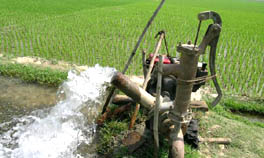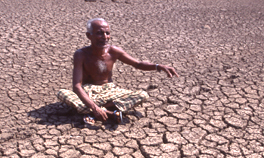Search Results
-
Biofuels certification and the law of the World Trade Organization
This paper analyzes biofuels certification within the optic of the World Trade Organization (WTO) and proposes requirements for compliance with the international trading system.
-
Biofuels certification and the law of the World Trade Organization
This paper analyzes biofuels certification within the optic of the World Trade Organization (WTO) and proposes requirements for compliance with the international trading system.
-

Status paper on river Ganga: state of environment and water quality
The status paper on Ganga by the Ministry of Environment. Provides a critical analysis of GAP & says that river water quality has improved at many locations however, the critical parameters of water quality, which affect human health, exceed the prescribed standard limits at major locations.
-

Revitalizing Asias irrigation: to sustainability meet tomorrows food needs
Asia accounts for 70% of the world
-
Drainage basin security: prospects for trade-offs and benefit sharing in a globalised world
The World Water Week in Stockholm is the leading annual global meeting place for capacity-building, partnership-building and follow-up on the implementation of international processes in water and development. Future-oriented, interdisciplinary and
-
Securing water for ecosystems and human well-being: the importance of environmental flows
Healthy water ecosystems simultaneously serve multiple aspects of human well-being, especially among poor communities living close to the land-water interface. Ecosystem services have real economic value today and special importance in mitigating future problems and economic losses related to climate change.
-
Securing water for ecosystems and human well-being: the importance of environmental flows
Healthy water ecosystems simultaneously serve multiple aspects of human well-being, especially among poor communities living close to the land-water interface. Ecosystem services have real economic value today and special importance in mitigating future problems and economic losses related to climate change.
-
Intensification of forest management: operational guidelines
The operational guidelines for "scheme on intensification of forest management". This scheme addresses both the general problems of forest protection and the area specific requirements for management intervention. It is aimed at modernizing the forestry sector and improving the working conditions at the cutting edge level.
-
Flexible water storage options and adaptation to climate change
Water storage has a vital role to play in improving global food security and building resilience for adaptation to climate change. A wide range of storage options are available, each with strengths and weaknesses.
-
Adapting water management to climate change
Good water management is a much broader issue than supply of freshwater to thirsty populations. Ecosystems and biodiversity, agriculture and food security, land use and forestry, human health and sanitation, settlements and infrastructure, industry and energy all depend on good water management.
-
Trees on farm: analysis of global extent and geographical patterns of agroforestry
This study by the World Agroforestry Center shows that almost half of the world's farmland has at least 10 percent tree cover. Says that farmers would do more to preserve trees if their trees were included in international climate change negotiations mitigation schemes.
-

Poverty and human development in Sri Lanka
This report traces the causes of poverty in Sri Lanka and provides policy recommendations, especially for areas of conflict. It argues that agriculture suffers from low productivity and competitiveness.
-
Mountain biodiversity and climate change
The booklet Mountain Biodiversity and Climate Change was developed from the contributions made at the International Mountain Biodiversity Conference in November 2008 in Kathmandu, Nepal, which brought together representatives from the eight countries of the Hindu Kush-Himalayan region with representatives of global programmes with experience related to data collection and biodiversity conservation
-
The state of agricultural commodity markets 2009
In the first half of 2008, the world was facing the highest food price levels in 30 years and a global food insecurity crisis. Although international food prices have since fallen, they are still above the levels seen in recent years and are expected to remain so.
-
Investing in land stewardship: GEFs efforts to combat land degradation and desertification globally
This booklet contains several examples of projects in the land degradation focal area and notes synergies in combating climate change. Land degradation affects more than 33 percent of the planet
-
Energy sector methane recovery and use: the importance of policy
This report documents the successful energy sector methane recovery and use policies that are in use around the world, with the aim of providing models that can be adapted
-

State of environment report India 2009
This latest report on State of India's environment provides an insight on the state and trends of the environment with focus on Climate Change, Food Security, Water Security, Energy Security and Urbanization. Assesses initiatives to monitor further degradation of environment & also suggests policy options.
-

Indias sanitation for all: how to make it happen
This discussion paper examines the current state of sanitation services in India in relation to two goals
-
Reengineering urban infrastructure
This paper unpacks the key mechanisms, strategies and processes the IFIs have used to build agreement with their policies among government, donor and corporate circles.

